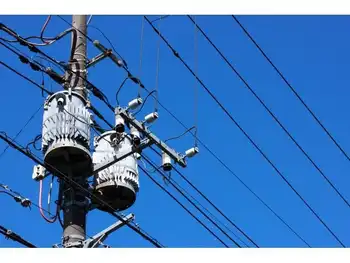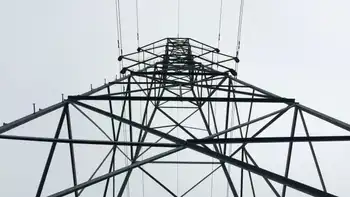The wave of the future for a cleaner commute
By Globe and Mail
NFPA 70e Training
Our customized live online or in‑person group training can be delivered to your staff at your location.

- Live Online
- 6 hours Instructor-led
- Group Training Available
April 22 is Earth Day in Canada. Among the many activities suggested by organizers to help mark the occasion and give the environment a break are: leaving your car at home for a day, unplugging all appliances and shutting off your car's engine if you find yourself idling for more than 10 seconds.
Steve Miloshev has another idea: ride one of his Motorino electric scooters.
Miloshev, president of Greenwit Technologies, is convinced that clean, emission-free transportation is the wave of the future, and has the improved sales numbers to prove it. From near-bankruptcy several years ago, his company has gone on to sell almost 1,000 units in Canada, with dealers in British Columbia and Ontario (Guelph, Kitchener, Petawawa) selling Motorino products out of his E-Ride franchises.
"It costs approximately 8 cents per 100 kilometres to operate one of our scooters," Miloshev says. "And the quality of the bikes is now better than it was just a couple of years ago. They're more reliable and more powerful."
Women tend to be his main customers — about 60 per cent — but more people are perceiving electric scooters not as recreational transport, but as legitimate commuter vehicles, Miloshev says.
All of the models Miloshev sells are made in China and they basically break down into three categories: bicycle, scooter and motorcycle. Transport Canada insists on it.
"If it's an electric bicycle," he explains, "you can ride it without a licence or insurance, and most of the time, it's regulated in the same way. You can park it on the sidewalk in the same way as a normal bike."
With a top speed of no more than 32 km/h, and an engine output of no greater than 500 watts, electric bicycles can be ridden by anyone over 16 years of age, if they wear a helmet.
This includes models that look like scooters, but have tell-tale pedals sticking out the side, for supplemental power.
These are classed as Power Assisted Bicycles by Transport Canada and can also be ridden without a specific motorcycle licence. They usually have a range of no more than 50 km.
Electric motorcycles, on the other hand, fall under the same laws as scooters over 50 cc. They can sometimes get up to 70 km/h and have the same sort of performance as their conventional, internal combustion counterparts.
In other words, you need a licence to ride one, can't take them on the freeway, must have insurance and a plate, and are required to obey the same traffic laws as cars.
They are strictly for city use and have a range of maybe 100 kilometres, although, Miloshev says, some models have room for an additional battery, which can double their range up to around 200 kilometres. They can also climb hills and carry a passenger — within reason.
Both scooters and motorcycle take from three to five hours to recharge, although a special "quick charge" booster is available that cuts the time down to about two hours.
Despite their obvious environmental correctness and the current push for clean-running transportation in most Canadian cities, electric scooters/motorcycles are still kind of a hard sell.
Especially where government bureaucracy is concerned. "Do you know," Miloshev says, "that you or I can build an electric car in the garage and for about 25 bucks, put a plate on it? But if I start bringing in electric scooters and motorcycles, Transport Canada will force me to spend $40,000 to certify each (different model). I can't afford that."
That's why when you buy an electric motorcycle, it's in U-build kit form, or Completely Knocked Down (CKD). Miloshev can sell you the kit, but not the finished product.
"If the government of Canada was really serious about clean alternative transportation, they would do more to promote it — make it more attractive by getting rid of the (tax on) electric bicycles, and allowing us to put in more powerful motors."
He also thinks it won't be long before things start to get really competitive. "Right now, China has the best combination of quality and labour costs, but India and maybe even Brazil are cheaper and will probably start up. And I don't know why some of the big companies from Japan haven't gotten involved. I think it's just a matter of time."
Ditto with battery technology. At this point, conventional lead-acid battery packs are the only game in town, but if and when lithium-ion batteries, for example, become affordable, everything changes.
"Right now, if you fit a lithium-ion battery to one of our products, it puts the price up to almost $5,000. That's not competitive, when you consider that you can buy a gas-engine scooter for as low as $2,000 these days."
"But, on the other hand, that type of power gives you better range, quicker recharge times and longer battery life."
It can't be all bad, however. Miloshev is currently finalizing plans to expand into Holland and France.











